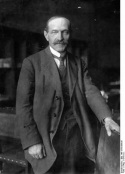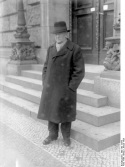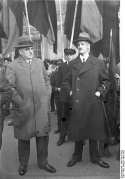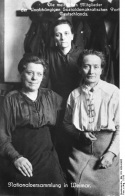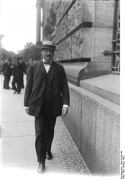Hugo Haase
1863-1919
- Became Chairman of the SPD in 1911
- Became Chairman of the USPD in 1917
- Became Chairman of the Council of People’s Representatives in 1918
A lawyer, Hugo Haase joined the SPD in 1887 and was part of the party’s Center, grouped around Karl Kautsky. In 1911, he was elected Chairman of the SPD. With Friedrich Ebert serving as the second chairman from 1913, Haase came to be viewed as the leader of the party’s left wing. Yet above all, he was a fervent pacifist; in 1915, he already called for the SPD to take a strong stance against the government’s path towards war. This put him at loggerheads with the rest of the party’s leadership, which split it apart in the end. The USPD was founded in 1917, with Haase becoming its chairman in turn. During the November Revolution, he was under pressure to restore the unity of the workers’ movement. To do so, he joined the Council of People’s Representatives. Yet the USPD’s influence remained marginal; in both governmental affairs and at the councils’ meeting, the SPD set the agenda. After the bloody Skirmish of the Berlin Schloss, Haase and the other USPD People’s Representatives stepped down. At that point, the party faced more and more pressure from both sides - the SPD on the right and the newly founded KPD on the left. It garnered only 7.6% of the votes in the National Assembly elections. Hugo Haase headed its parliamentary group. He was murdered in the fall of 1919.
